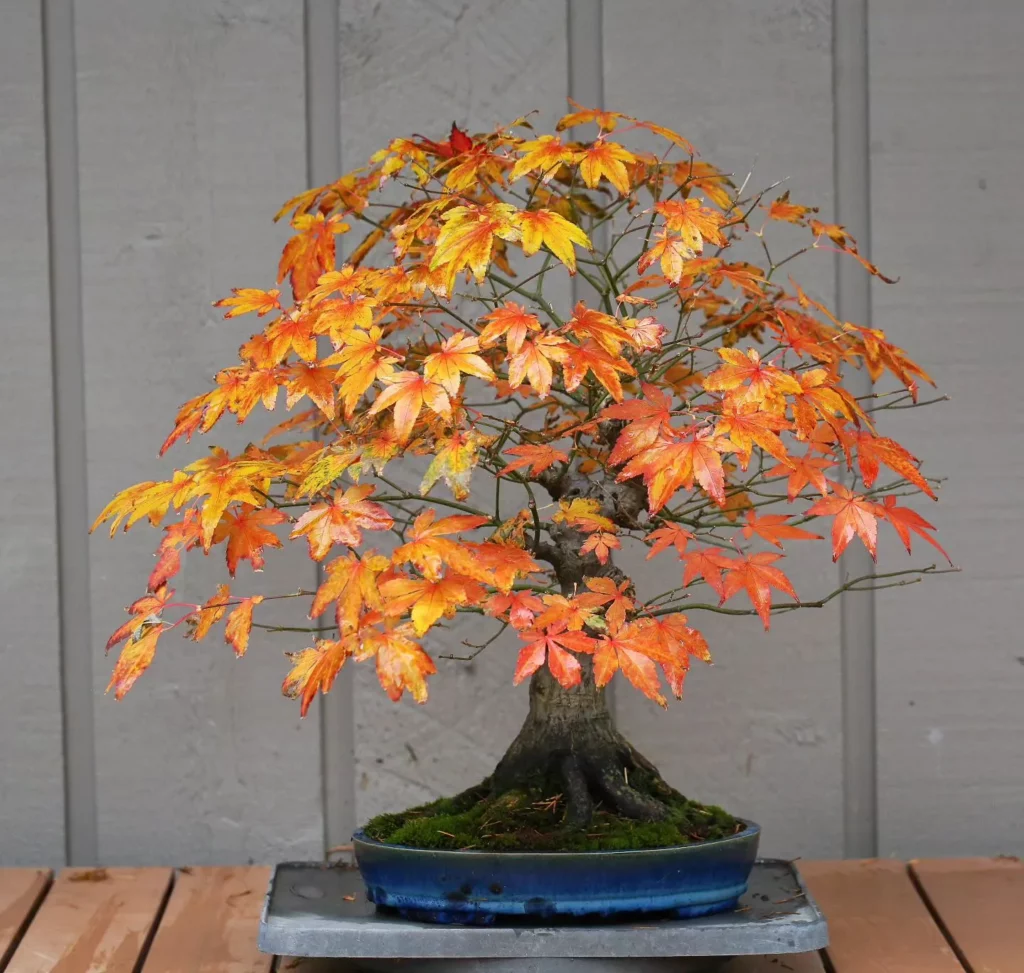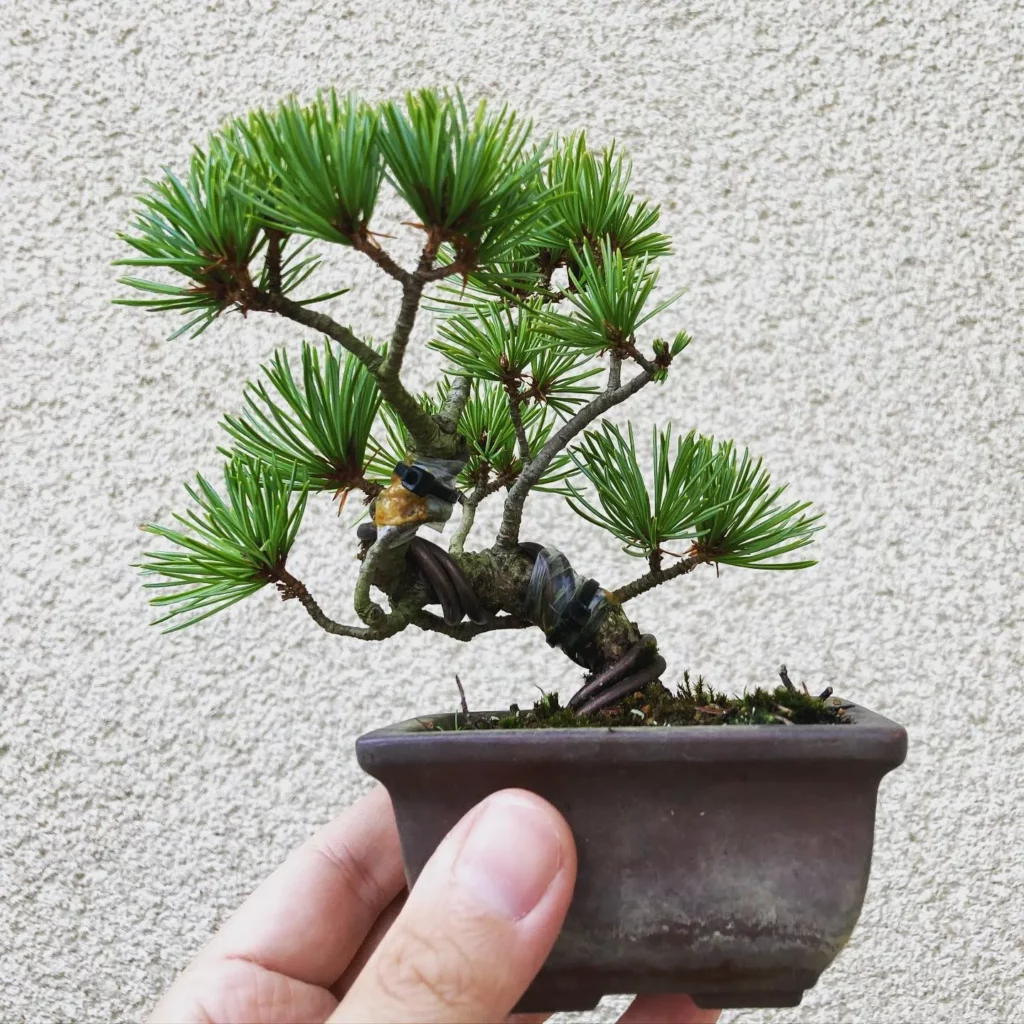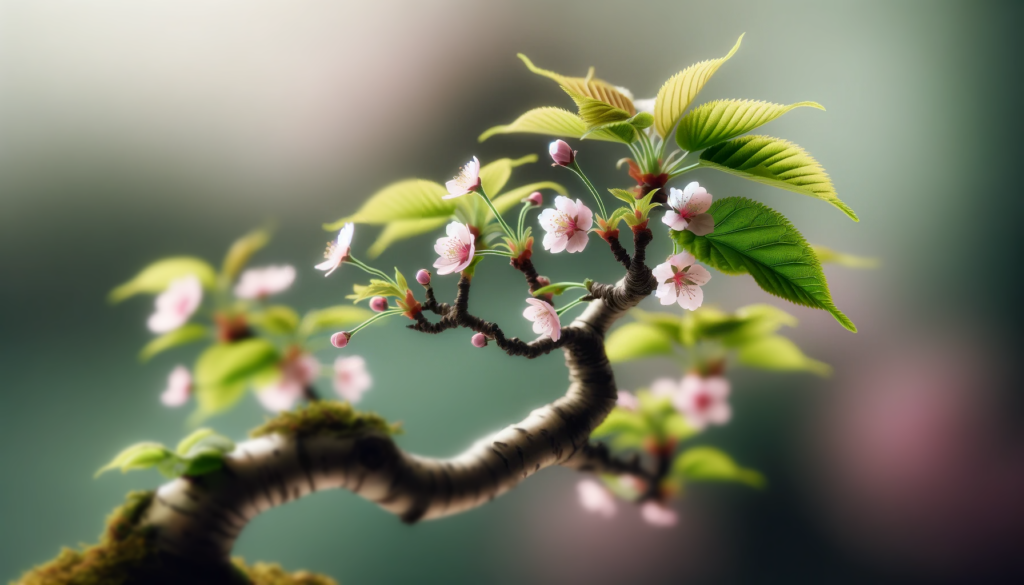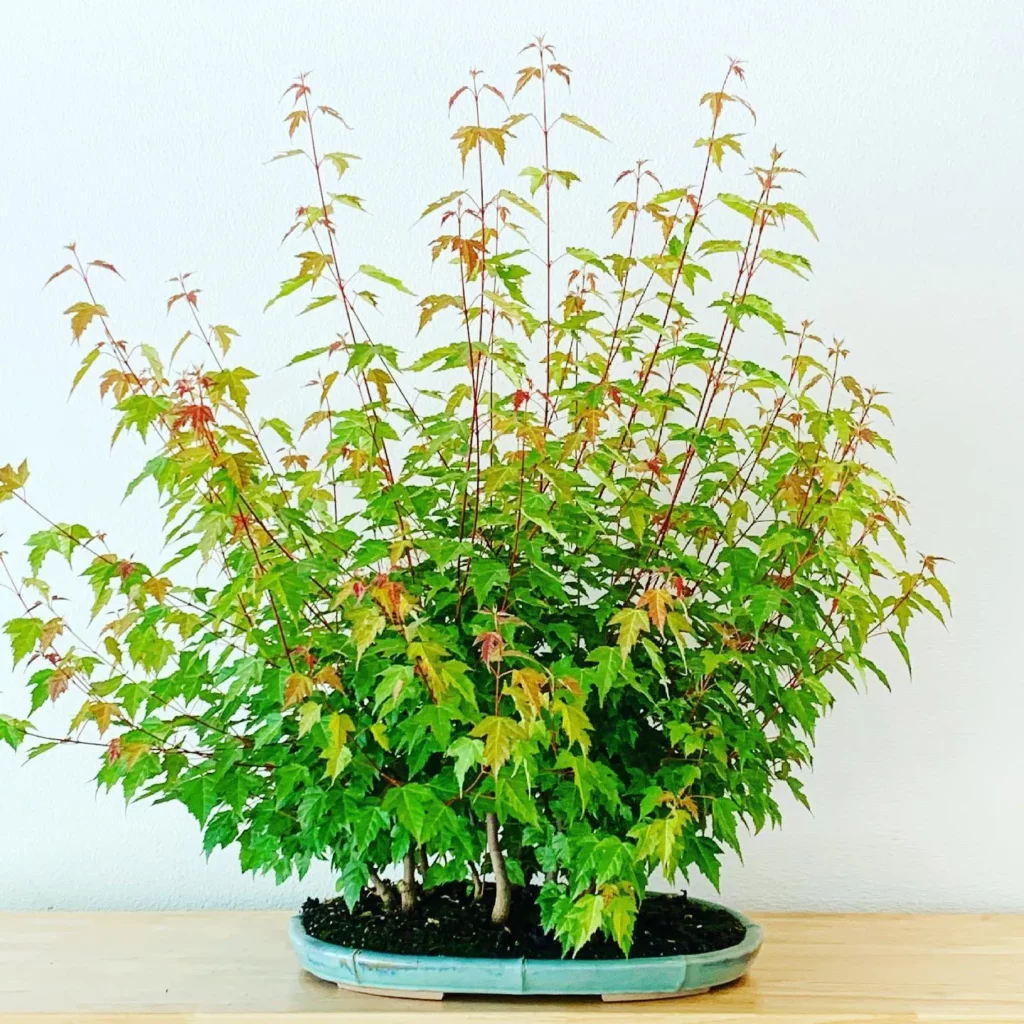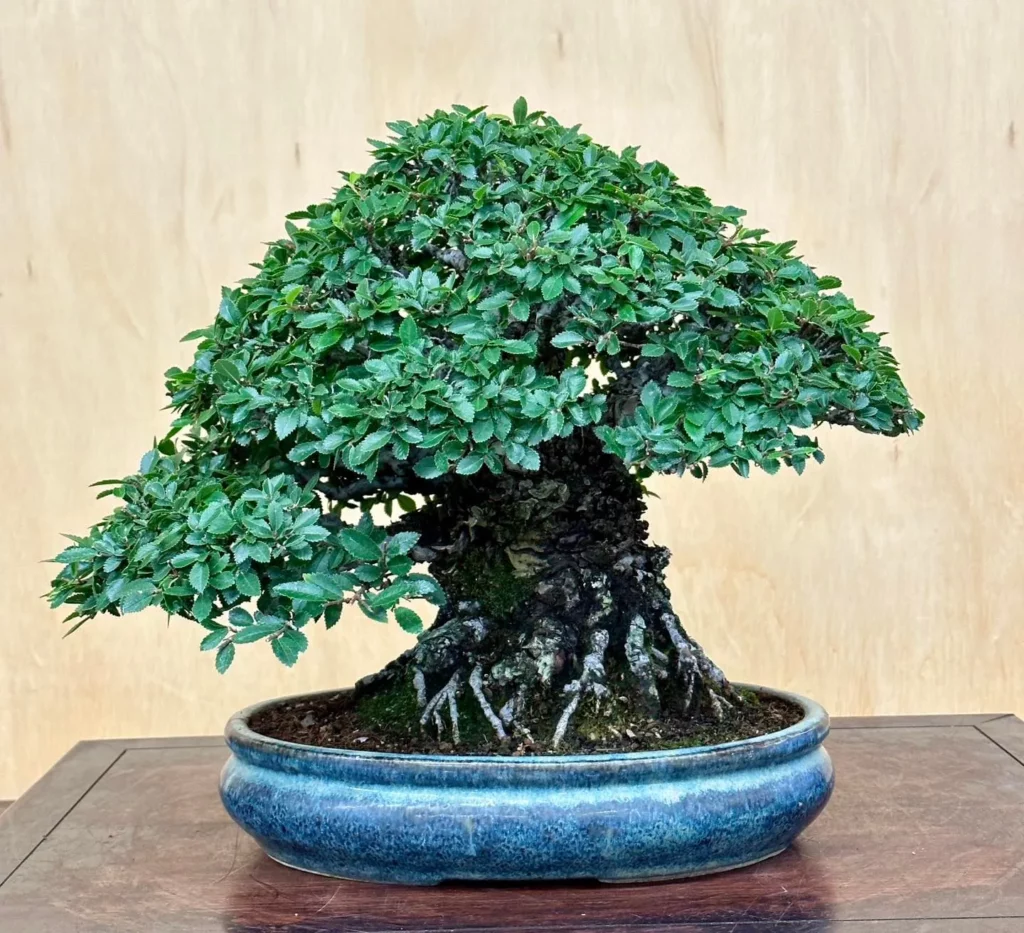Display your bonsai tree effectively by choosing a stand that complements its style and size, and enhance the presentation with subtle accents like small stones or moss.
Displaying bonsai trees is an essential aspect of the bonsai community, allowing enthusiasts to showcase their expertise and promote the cultural significance of these treasured plants. When choosing a bonsai tree for display, factors such as age, size, and overall appearance should be considered. It is important to select a tree that not only reflects your personal style but also matches the theme of the show or display, creating a cohesive and visually pleasing presentation.
The choice of a bonsai display stand is equally important in enhancing the beauty of the tree. There are various options available, including stands made from pine, redwood, cedar, bamboo, and maple. The stand you choose should not only provide stability but also complement the style of the bonsai tree. The size and stability of the stand should be appropriate for the tree being displayed, ensuring that it is showcased in the best possible way.
Accent plants play a vital role in bonsai displays, providing context and balance to the overall composition. They can be displayed on a variety of items, such as stands, slabs, ceramics, and bamboo. The placement of accent plants is crucial, as they should enhance and complement a specific element of the display. It is important to select accent plants that are full and well-maintained, adding to the overall beauty of the bonsai tree.
Key Takeaways:
- Choosing a bonsai tree for display involves considering factors such as age, size, and overall appearance, as well as matching the tree’s style with the theme of the show or display.
- When selecting a bonsai display stand, consider the material options available, such as pine, redwood, cedar, bamboo, and maple, and ensure that the stand provides stability and complements the bonsai tree’s style.
- Accent plants contribute to the overall balance and context of a bonsai display. They can be displayed on a variety of items and should be selected based on their ability to enhance and complement specific elements of the display.
- Displaying bonsai trees is not only a way to showcase expertise but also to foster appreciation for bonsai as an art form.
- Regular care and maintenance are essential for preserving the beauty and vibrancy of displayed bonsai trees, including proper watering, pruning, and fertilization techniques.
Choosing the Perfect Bonsai Tree for Display
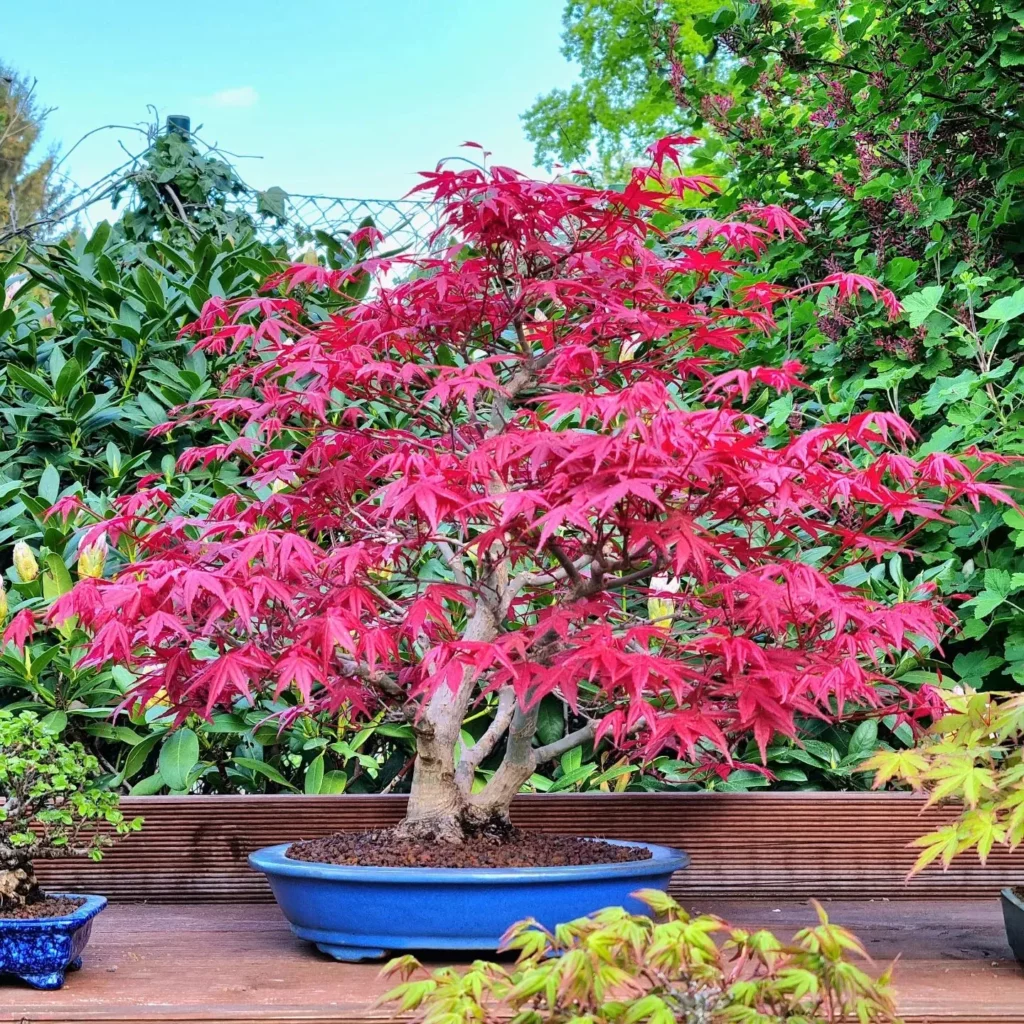
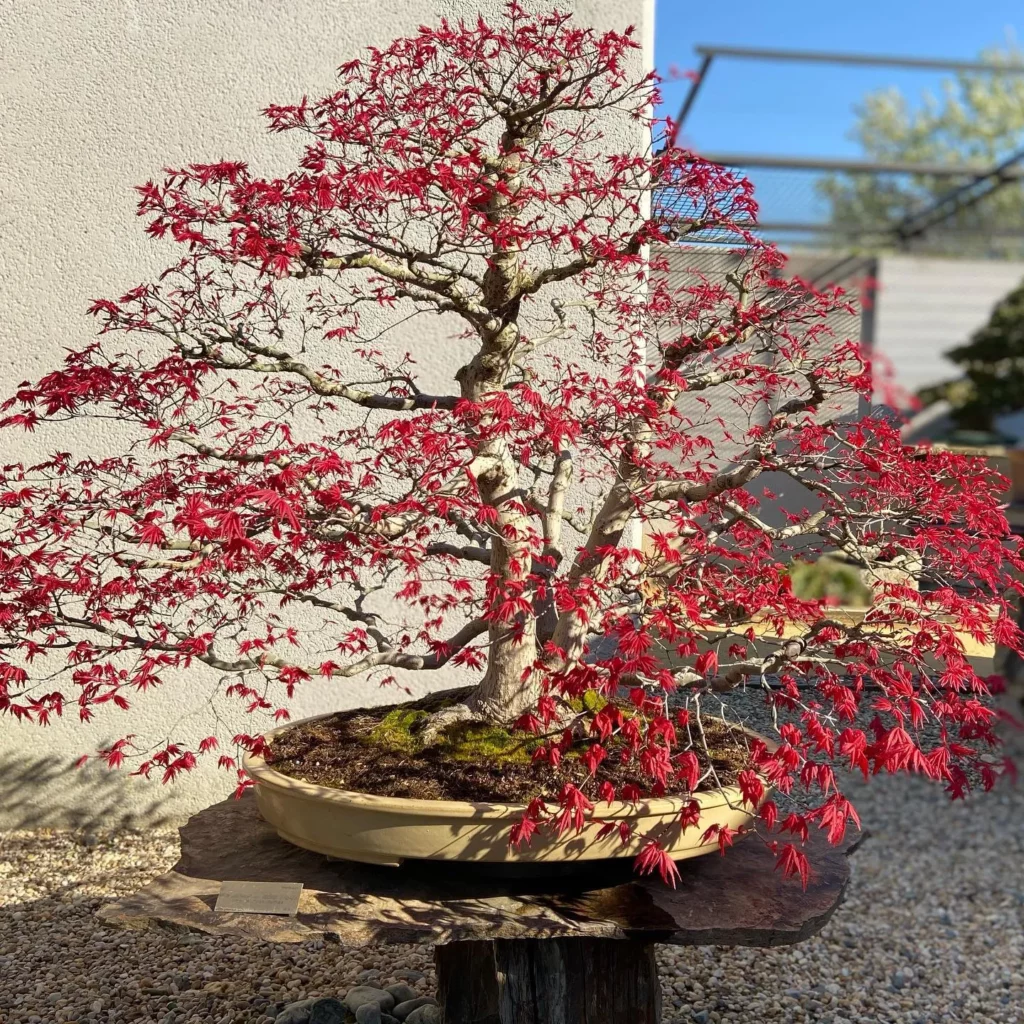
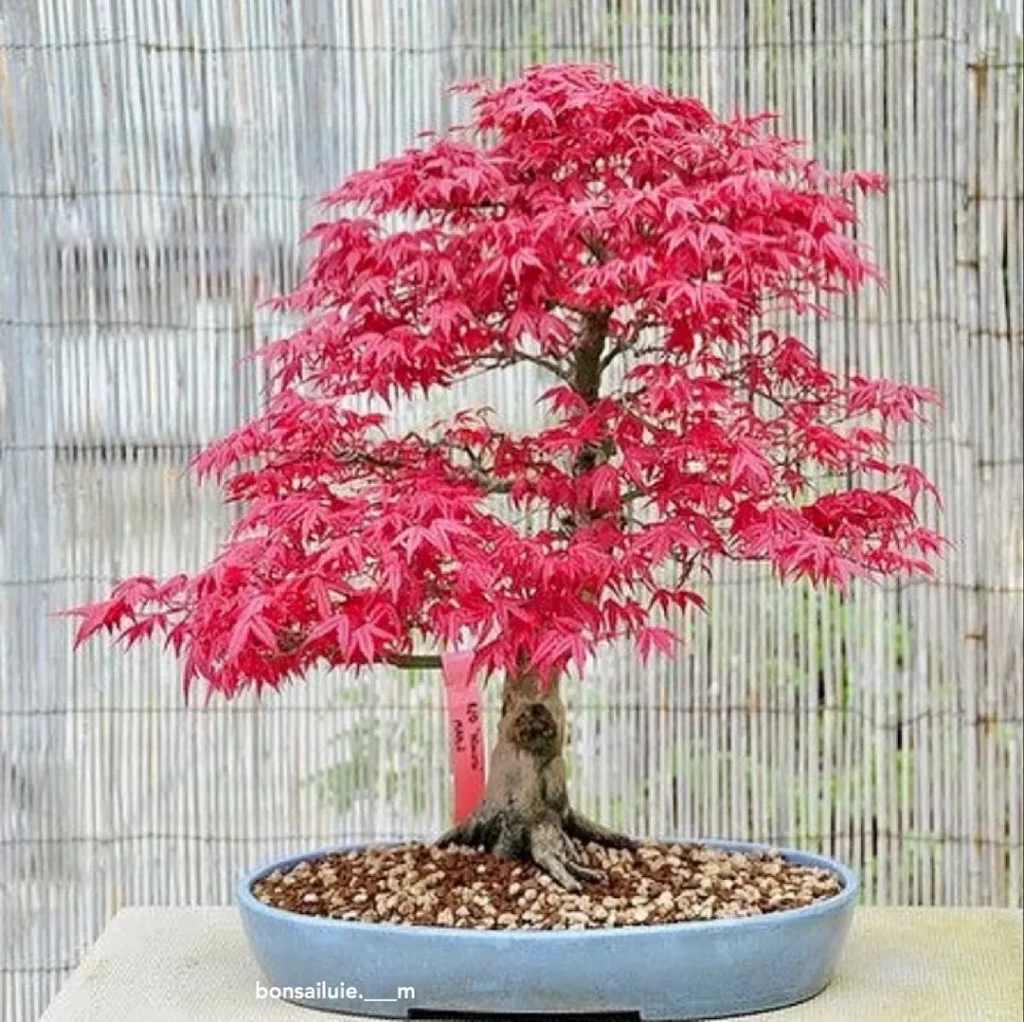
When it comes to displaying bonsai trees, selecting the perfect tree is crucial for creating an aesthetically pleasing showcase. Several factors need to be considered in order to choose the right bonsai tree for display. The tree’s age, size, and overall appearance play significant roles in determining its suitability. Additionally, the style of the tree should align with the theme of the show or display, ensuring a cohesive and harmonious presentation.
No products found.
Each bonsai tree has its own unique qualities and characteristics. Some trees possess elegant curves and delicate branches, while others have a more rugged and sturdy appearance. It is important to choose a tree that captures attention and reflects the desired atmosphere of the display. Whether it’s a traditional upright style, a cascading style, or any other style, the tree should convey a sense of beauty and artistry.
No products found.
Bonsai trees, with their ancient symbolism and intricate shaping techniques, are often regarded as living works of art. The tree selected for display should evoke a sense of admiration and appreciation from viewers. By carefully considering the age, size, overall appearance, and style of the bonsai tree, enthusiasts can create captivating displays that showcase the true essence and beauty of this age-old art form.
Factors to Consider When Choosing a Bonsai Tree for Display
| Factor | Description |
|---|---|
| Age | Consider the tree’s age and the story it tells through its growth and development. |
| Size | Choose a tree that suits the display area, ensuring it is neither too small nor too large. |
| Overall Appearance | Look for a visually appealing tree that has well-proportioned branches and a balanced canopy. |
| Style | Align the tree’s style with the theme of the show or display to create a cohesive presentation. |
Enhancing the Display with Bonsai Display Stands

A carefully chosen bonsai display stand can elevate the overall look of your showcased bonsai tree, creating a visually stunning display. When selecting a bonsai display stand, it’s important to consider both the material and style that will complement your bonsai tree. Different materials, such as pine, redwood, cedar, bamboo, and maple, offer unique aesthetics and can enhance the beauty of the tree.
The size and stability of the stand are equally important. Ensure that the stand is appropriate for the dimensions of your bonsai tree, providing the necessary support and stability. The stand should not overpower the tree, but rather accentuate its natural beauty.
To create a harmonious display, the bonsai display stand should match the style of the tree. For elegant and delicate trees, a sleek and minimalist stand may be the perfect choice. On the other hand, a more rustic or traditional bonsai tree may benefit from a stand with intricate carvings or a natural wood finish. The goal is to create a cohesive and visually appealing display that showcases the true essence of the bonsai tree.
Adding Accents to Enhance the Display
Accent plants are another element that can enhance the overall beauty of your bonsai display. These plants contribute to the context and balance of the display, adding a touch of natural beauty. When selecting accent plants, ensure they are in full and well-maintained condition, complementing the specific elements of the display.
Accent plants can be displayed on various items, including stands, slabs, ceramics, and bamboo. These items provide a platform to showcase the beauty of the accent plants and create visual interest in your display. Experiment with different combinations and arrangements to find the perfect balance between the bonsai tree and the accent plants.
| Material | Aesthetics | Stability |
|---|---|---|
| Pine | Elegant and natural | Sturdy and durable |
| Redwood | Rich and warm | Resistant to rot |
| Cedar | Aromatic and beautiful grain | Naturally weather-resistant |
| Bamboo | Sleek and minimalist | Lightweight and eco-friendly |
| Maple | Subtle and elegant | Strong and resilient |
Optimal Placement of Accent Plants



Accent plants are an essential component of bonsai displays, adding depth and character to the overall presentation of your showcased tree. When strategically placed, these plants can complement and emphasize specific elements of the display, creating a harmonious and visually stunning arrangement. Whether you are displaying bonsai trees indoors or in an outdoor garden, proper accent placement is crucial for achieving the desired effect.
One effective way to showcase accent plants is by using different display items such as stands, slabs, ceramics, or bamboo. These items provide a platform for the accent plants, elevating them and giving them prominence within the bonsai display. The choice of display item should be based on the style and theme of your bonsai tree, as well as the overall aesthetic you wish to achieve.
When deciding on the placement of accent plants, consider how they can enhance the focal point or main feature of the bonsai tree. For example, if your tree has a twisted trunk, you can position an accent plant with flowing or cascading foliage next to it, to accentuate the tree’s unique shape. Alternatively, if your bonsai has vibrant flowers, placing an accent plant with contrasting foliage nearby can help highlight the blooms and create visual interest.
It is important to select accent plants that are full and well-maintained. Their foliage should be healthy and vibrant, as they will be drawing attention and adding visual appeal to your display. Additionally, consider the scale and proportion of the accent plants in relation to the bonsai tree. They should complement the tree without overpowering it, creating a balanced and cohesive composition.
| Benefits of Accent Plants in Bonsai Displays |
|---|
| 1. Adds depth and character to the overall presentation |
| 2. Complements and emphasizes specific elements of the display |
| 3. Provides a platform for accent plants to shine |
| 4. Enhances the focal point or main feature of the bonsai tree |
| 5. Creates visual interest and a harmonious composition |
Selecting and Caring for Accent Plants
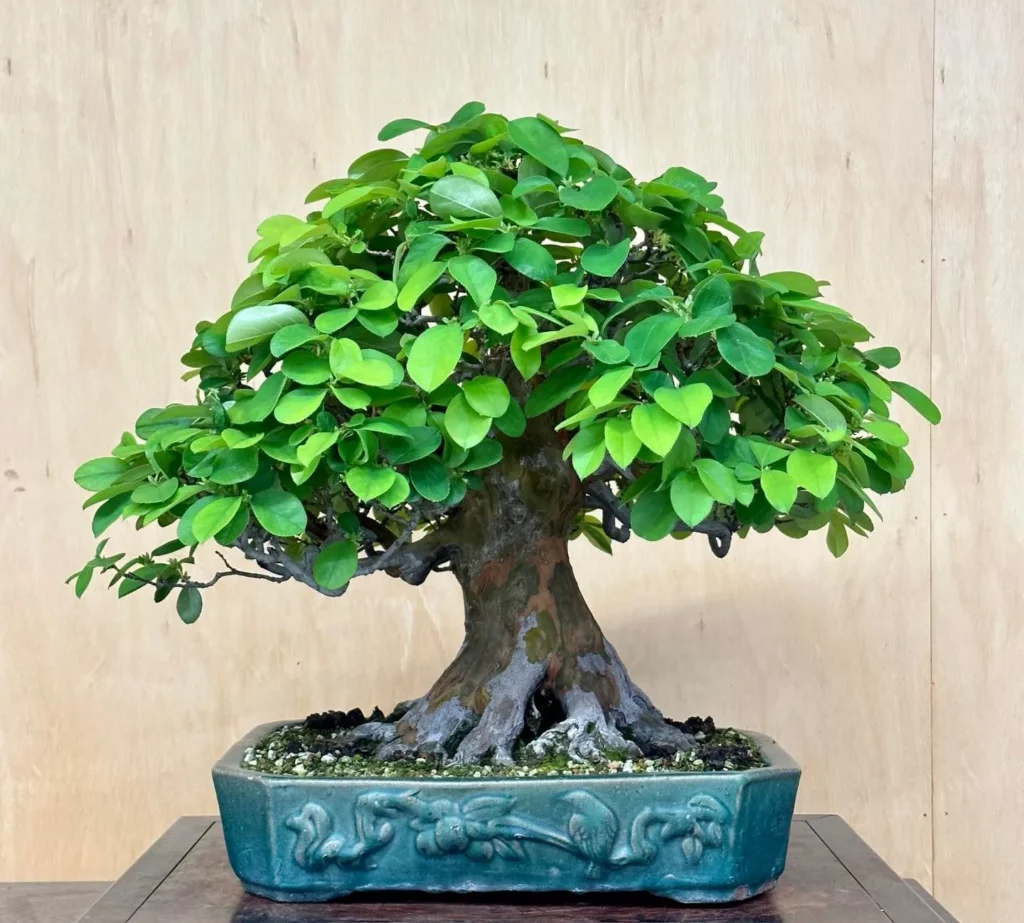
To create a truly unique bonsai tree display, it is essential to carefully select and care for the accent plants that accompany your showcased tree. These plants play a vital role in enhancing the overall aesthetics of the display, providing context, balance, and an added layer of beauty. When choosing accent plants, consider their size, color, texture, and overall compatibility with the bonsai tree.
One popular option for accent plants is moss, which can be used to cover the surface of the soil, adding a lush and natural touch to the display. Other choices include small flowering plants, such as miniature orchids or pansies, which can provide bursts of color amidst the greenery. Succulents, with their unique shapes and textures, can also make excellent accent plants.
Once you have carefully selected your accent plants, proper care is essential to ensure their health and longevity. Pay attention to their watering needs, as some plants may require more frequent watering than others. Provide them with adequate sunlight, but be mindful of their specific light requirements. Regularly check for any signs of pests or diseases, and promptly address any issues that arise.
In addition to regular care, it is important to periodically groom your accent plants. Trim any dead or yellowing leaves, and remove any weeds or unwanted growth. This will help maintain the overall beauty and health of both the bonsai tree and its accompanying accent plants.
| Accent Plant Selection Checklist: | Accent Plant Care Guidelines: |
|---|---|
|
|
Creating a Harmonious Bonsai Display
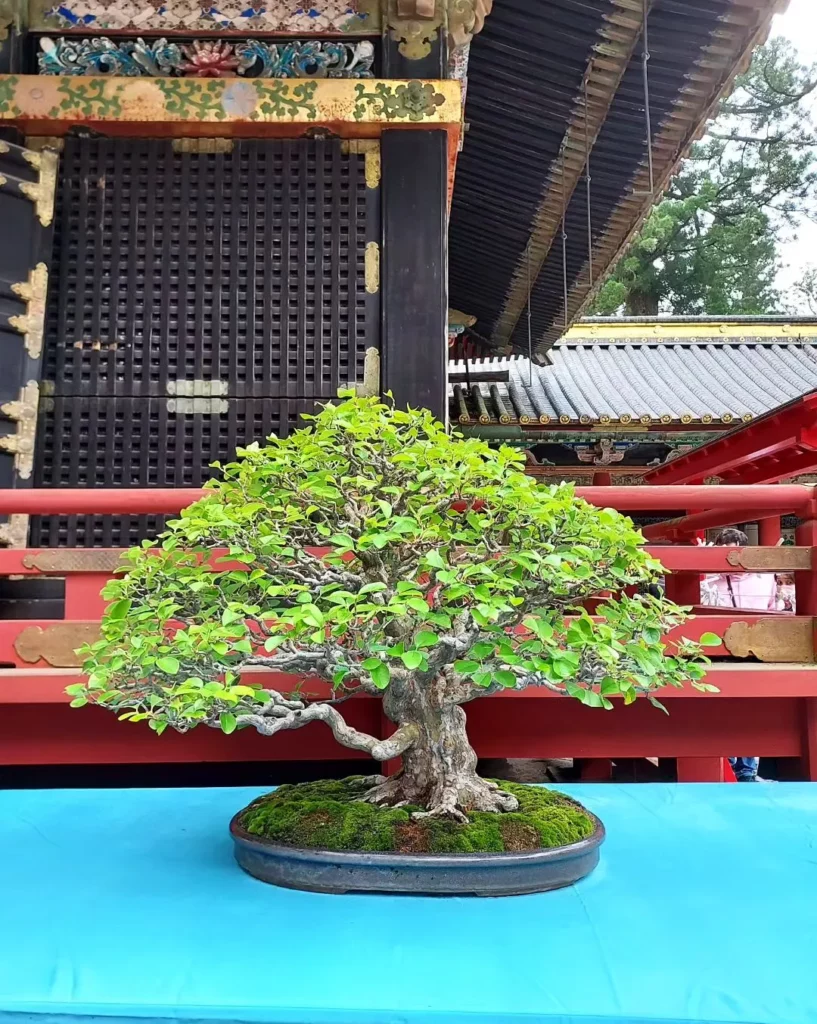
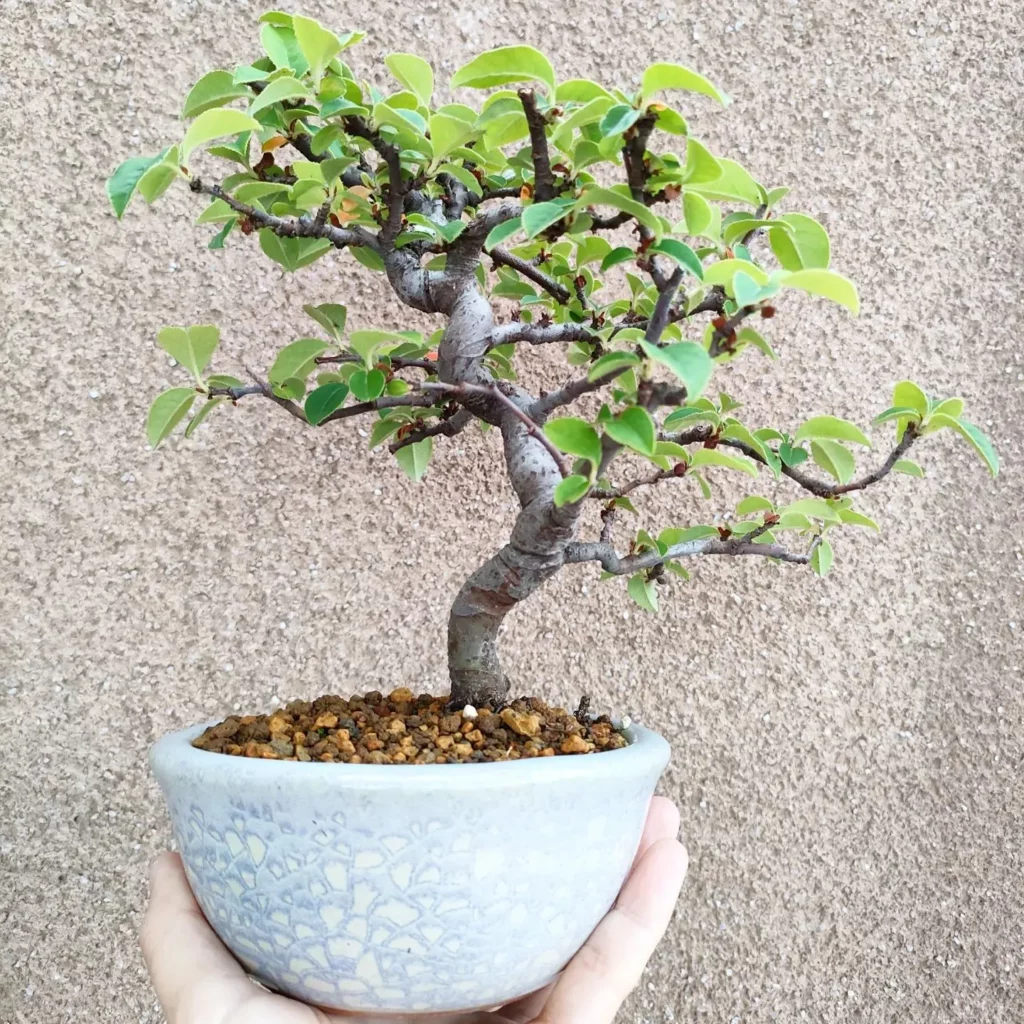
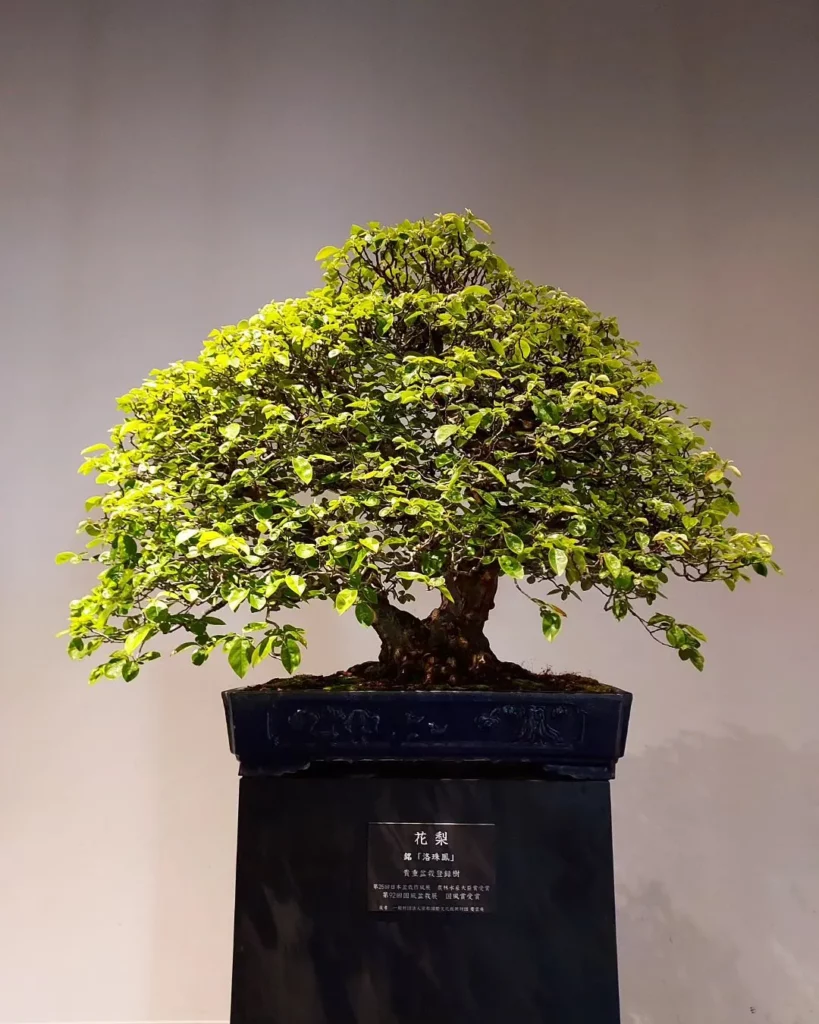
The key to showcasing bonsai trees lies in creating a harmonious display that enhances the unique beauty of each tree. When it comes to displaying bonsai, every element plays a crucial role in achieving this goal – from the choice of tree to the selection of a suitable stand and accent plants.
A well-chosen bonsai display stand is essential in bringing out the best in your tree. Consider the style and material of the stand, ensuring it complements the tree’s aesthetics. Options such as pine, redwood, cedar, bamboo, and maple offer versatility and add a touch of natural elegance to the display. The size and stability of the stand should be appropriate for the tree being presented, providing support while allowing the tree to take center stage.
Accent plants bring life and context to a bonsai display, adding depth and visual interest. They can be displayed on various items such as stands, slabs, ceramics, or bamboo, creating a dynamic composition. Careful placement of these accent plants is crucial, as they should complement a specific element of the display, without overpowering the main tree. Make sure the accent plants are well-maintained, full, and healthy, as they contribute to the overall beauty of the showcase.
By carefully considering the choice of the tree, selecting a suitable display stand, and incorporating well-chosen accent plants, you can create a visually stunning and harmonious bonsai display. Each element should work together to enhance the beauty and capture the essence of the tree, creating a captivating presentation that showcases the artistry and dedication of bonsai enthusiasts.
| Key Points: | Benefits: |
|---|---|
| Choose a display stand that complements the tree’s style and provides stability | Enhances the visual appeal and supports the tree |
| Select accent plants that complement a specific element of the display | Provides context and balance |
| Maintain full and well-maintained accent plants | Contributes to the overall beauty of the showcase |
Exhibiting Bonsai at Shows and in Personal Collections
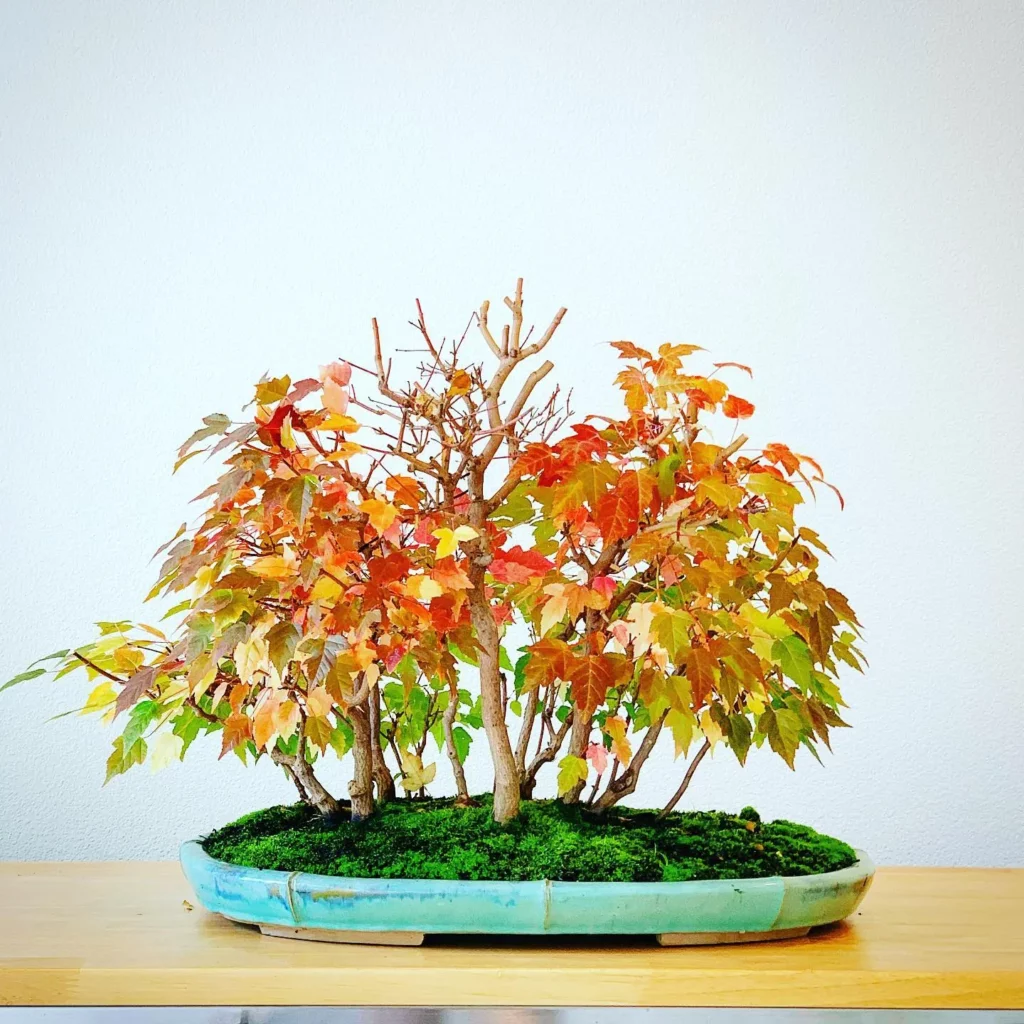
Displaying bonsai trees in shows and personal collections plays a vital role in fostering the bonsai community, allowing enthusiasts to connect, learn, and promote the beauty of these miniature trees. Bonsai shows provide a platform for enthusiasts to share their expertise, showcase their hard work, and inspire others within the community. These events are not only an opportunity to display their bonsai trees but also a chance to connect with fellow enthusiasts, exchange ideas, and gather inspiration for future projects.
In personal collections, displaying bonsai trees allows enthusiasts to create their own miniature garden oasis, showcasing the diverse range of bonsai styles and species they have cultivated. It serves as a visual representation of their dedication and passion for this ancient art form. Additionally, having bonsai trees on display in personal collections allows enthusiasts to regularly observe and care for their trees, ensuring they thrive in a controlled and nurturing environment.
When participating in shows or displaying bonsai trees in personal collections, it is important to consider the overall presentation and aesthetics. Each tree should be carefully selected based on its age, size, and overall appearance. The chosen tree should complement the theme of the show or the desired ambiance of the collection. By selecting the right trees for display, enthusiasts can create a harmonious and visually appealing arrangement that showcases the unique beauty of each bonsai.
Furthermore, the choice of bonsai display stands plays a crucial role in enhancing the showcase. Bonsai display stands, such as those made from pine, redwood, cedar, bamboo, or maple, not only provide stability but also elevate the visual appeal of the displayed trees. The size and stability of the stand should be appropriate for the tree being displayed, and it should match and complement the style of the bonsai. The right stand can accentuate the tree’s natural beauty and create a cohesive and aesthetically pleasing display.
Fostering Appreciation for Bonsai
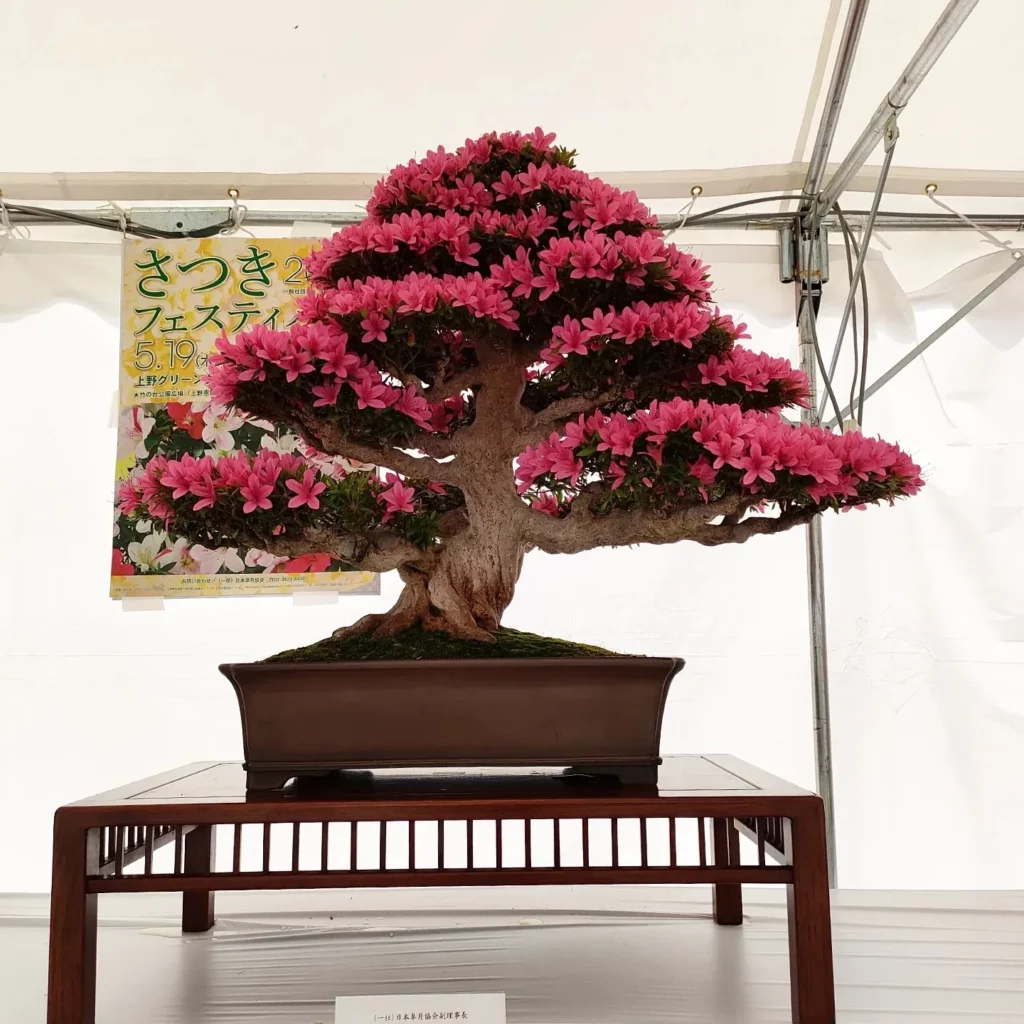

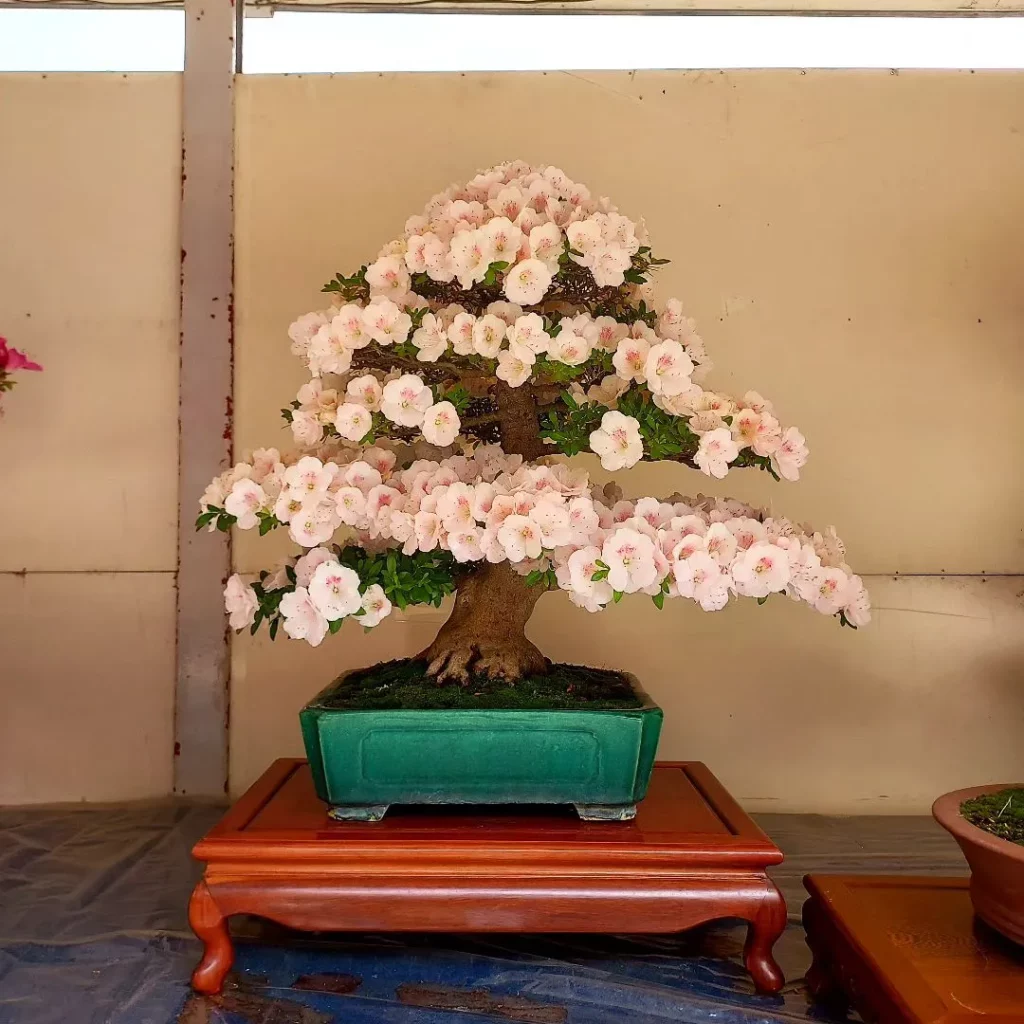
Through creative and captivating displays, bonsai enthusiasts can inspire a profound appreciation for the artistry and craftsmanship that goes into each bonsai tree. These displays bring the beauty of nature into our lives, allowing us to connect with the essence of these living works of art. By showcasing bonsai trees in unique and visually stunning ways, we can captivate viewers and encourage them to explore the intricate details and delicate balance of these miniature landscapes.
One way to foster appreciation is by creating displays that highlight the natural beauty and unique features of each bonsai tree. By carefully selecting accent plants that complement the tree’s style and using them to create visually appealing compositions, we can draw attention to the intricate details and create a harmonious display. For example, a bonsai tree with delicate flowering branches can be complemented with vibrant accent plants that enhance its beauty and create a captivating visual contrast.
Another way to foster appreciation is by showcasing bonsai trees in various settings, both indoors and outdoors. Indoor displays allow us to bring the beauty of bonsai into our living spaces, creating a serene and calming atmosphere. Outdoor displays, on the other hand, allow us to interact with nature and appreciate the bonsai trees in the context of their natural surroundings. By exploring different settings, we can discover new ways to showcase the beauty of these miniature trees and deepen our connection with nature.
| Indoor Displays | Outdoor Displays |
|---|---|
|
|
Showcasing Bonsai Trees in Different Settings

Whether displayed indoors or outdoors, bonsai trees can bring a touch of natural beauty and tranquility to any setting. The choice of setting depends on personal preference and the specific characteristics of the bonsai tree. Indoor displays allow for year-round enjoyment and can be an excellent option for those living in urban areas or regions with extreme climates. Outdoor displays, on the other hand, provide a closer connection to nature and allow the bonsai to thrive in its natural environment.
When displaying bonsai trees indoors, it’s important to consider the lighting conditions and temperature of the chosen location. Bonsai trees typically require bright, indirect light to thrive, so placing them near a window with filtered sunlight is ideal. Additionally, maintaining a stable temperature between 60-75°F (15-24°C) is crucial for the tree’s health. Avoid placing the bonsai near drafts or heat sources, as these can cause stress and damage to the tree.
Outdoor bonsai tree displays offer a wider range of possibilities in terms of size and showcasing options. Placing a bonsai in a garden setting allows for a more natural and immersive experience. Consider creating a dedicated bonsai garden area or integrating the bonsai tree into existing landscaping elements. Pay attention to factors such as sunlight exposure, wind protection, and proper drainage to ensure the bonsai thrives in its outdoor environment.
| Setting | Advantages | Considerations |
|---|---|---|
| Indoor | – Year-round enjoyment – Protection from extreme weather – Close proximity for easy care | – Adequate lighting and temperature control – Avoiding drafts and heat sources |
| Outdoor | – Closer connection to nature – More space for larger bonsai trees – Integration with garden landscaping | – Proper sunlight exposure – Wind protection – Adequate drainage for rainwater |
Maintaining the Beauty of Displayed Bonsai Trees


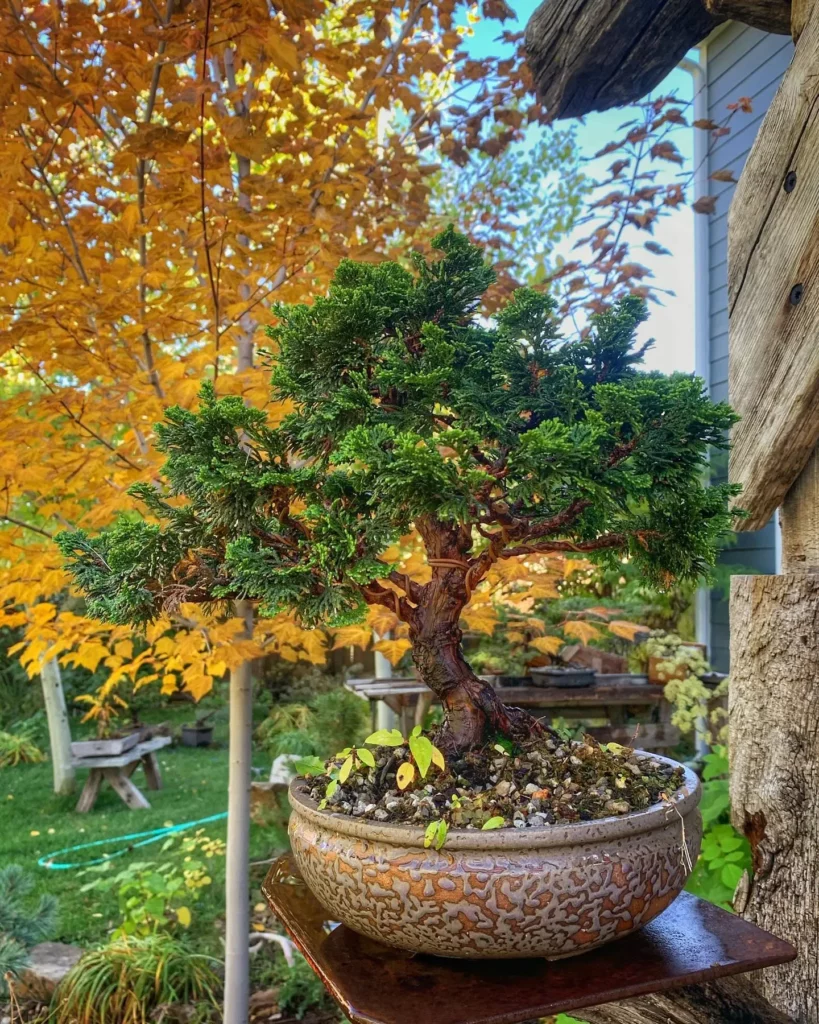
Preserving the beauty of your displayed bonsai trees requires regular care and maintenance, ensuring they continue to captivate and inspire. By following proper watering, pruning, and fertilization techniques, you can ensure the longevity and vibrancy of your showcased trees.
When it comes to watering your bonsai, it is essential to find the right balance. Overwatering can lead to root rot, while underwatering can cause the tree to dry out and suffer. It is advisable to water your bonsai when the topsoil feels slightly dry to the touch. Use a watering can or a mist sprayer to evenly distribute the water, avoiding excessive force that can dislodge the tree from its pot. Take into consideration the specific watering needs of your bonsai tree species, as different types may require different levels of moisture.
No products found.
Pruning is another crucial aspect of maintaining the beauty of your bonsai trees. Regular pruning helps control the growth and shape of the tree, enhancing its overall appearance. Trim away any dead or damaged branches, as well as any crossing or overcrowded branches. This will improve the tree’s structure and allow for better light and airflow to reach all parts of the tree. Additionally, pruning can be used to refine the tree’s silhouette and create a more balanced and aesthetically pleasing display.
Fertilization is vital to provide your bonsai trees with the necessary nutrients for healthy growth and vibrant foliage. Choose a balanced, slow-release bonsai fertilizer and apply it according to the manufacturer’s instructions. Fertilize your trees during the growing season, typically from spring to autumn, and adjust the frequency and dosage based on the needs of your specific bonsai species. Regular fertilization will promote strong root development, lush foliage, and vibrant blossoms, enhancing the overall beauty of your displayed bonsai trees.
| Watering | Pruning | Fertilization |
|---|---|---|
| Find the right balance to avoid overwatering or underwatering. | Regularly prune to control growth, improve structure, and refine the tree’s silhouette. | Choose a balanced, slow-release bonsai fertilizer and apply it during the growing season. |
| Water when topsoil feels slightly dry to the touch. | Remove dead or damaged branches and overcrowded growth. | Adjust frequency and dosage based on the needs of your specific bonsai species. |
| Use a watering can or mist sprayer for even distribution. | Allow light and airflow to reach all parts of the tree. | Regular fertilization promotes strong root development, lush foliage, and vibrant blossoms. |
Conclusion
Displaying bonsai trees with the right stands and accents enhances their beauty and creates captivating showcases that celebrate the artistry and cultural significance of bonsai. When choosing a bonsai tree for display, it is essential to consider factors such as age, size, and overall appearance. The tree’s style should also match the theme of the show or display to create a harmonious presentation.
Equally important is the choice of a bonsai display stand, which should complement the tree’s style and provide stability. Materials such as pine, redwood, cedar, bamboo, and maple offer a range of options to enhance the display’s beauty. The stand’s size and stability should be appropriate for the tree, ensuring it is showcased effectively.
Accent plants play a vital role in bonsai displays, contributing to the overall balance and context. They can be displayed on stands, slabs, ceramics, or bamboo, adding visual interest and complementing specific elements of the display. Selecting full and well-maintained accent plants is crucial to create a visually appealing presentation.
In shows and personal collections, displaying bonsai trees allows enthusiasts to share their expertise, gather inspiration, and promote the cultural importance of bonsai. It is an opportunity to showcase the beauty of these living works of art and deepen admiration for bonsai as an art form. By creating visually stunning displays in different settings, both indoors and outdoors, the artistry and craftsmanship behind the bonsai tree are showcased to their full potential.
Regular care and maintenance are essential to preserve the beauty of displayed bonsai trees. Proper watering, pruning, and fertilization techniques should be employed to ensure the longevity and vibrancy of the showcased trees. By carefully tending to these living works of art, bonsai enthusiasts can continue to appreciate and enjoy their beauty for years to come.
FAQ
Q: Why is displaying bonsai trees important?
A: Displaying bonsai trees allows enthusiasts to share their expertise, gather inspiration and ideas, and promote the cultural significance of bonsai.
Q: What factors should be considered when choosing a bonsai tree for display?
A: Factors such as age, size, and overall appearance should be considered when choosing a bonsai tree for display.
Q: How should the style of the bonsai tree match the theme of the show?
A: The style of the bonsai tree should match the theme of the show in order to create a cohesive and harmonious display.
Q: What materials can bonsai display stands be made of?
A: Bonsai display stands can be made of materials such as pine, redwood, cedar, bamboo, and maple.
Q: What should be considered when choosing a bonsai display stand?
A: The size and stability of the stand should be appropriate for the tree being displayed, and the stand should complement the bonsai style visually and functionally.
Q: What is the role of accent plants in bonsai displays?
A: Accent plants provide context and balance in bonsai displays, enhancing the overall appearance of the showcase.
Q: On what items can accent plants be displayed?
A: Accent plants can be displayed on a variety of items, from stands to slabs to ceramics to bamboo.
Q: Where should accent plants be placed in a bonsai display?
A: Accent plants should be placed to complement a specific element of the display and contribute to its overall balance.
Q: How should accent plants be selected and cared for?
A: Accent plants should be selected based on their fullness and well-maintained condition. Proper care should be provided to ensure their health and vitality.
Q: What is the goal of displaying bonsai trees?
A: The goal of displaying bonsai trees is to enhance their beauty and create visually appealing and harmonious showcases.
Q: Why is it important to display bonsai trees at shows and in personal collections?
A: Displaying bonsai trees at shows and in personal collections allows enthusiasts to share their knowledge, gather inspiration, and promote the cultural importance of bonsai.

